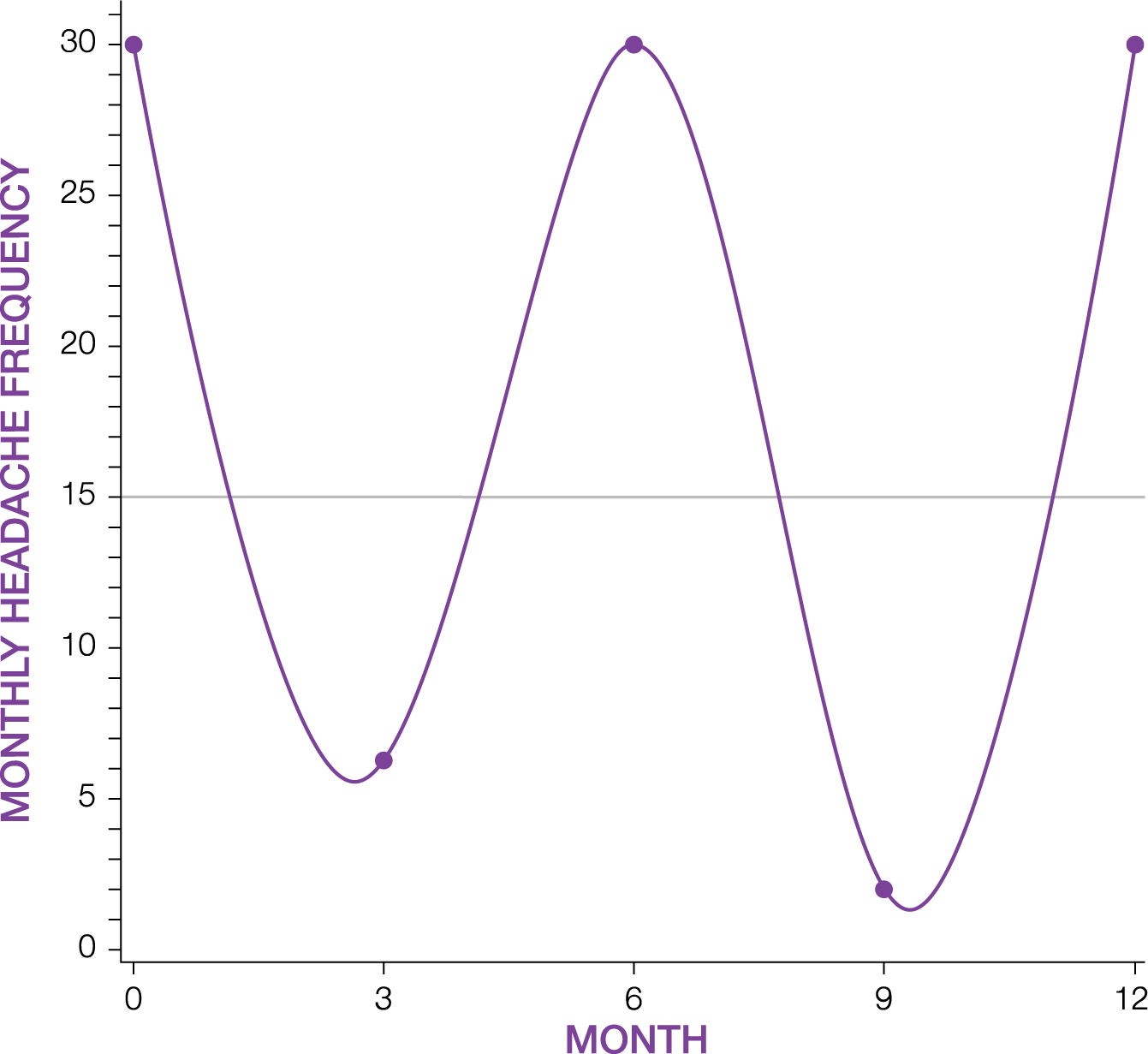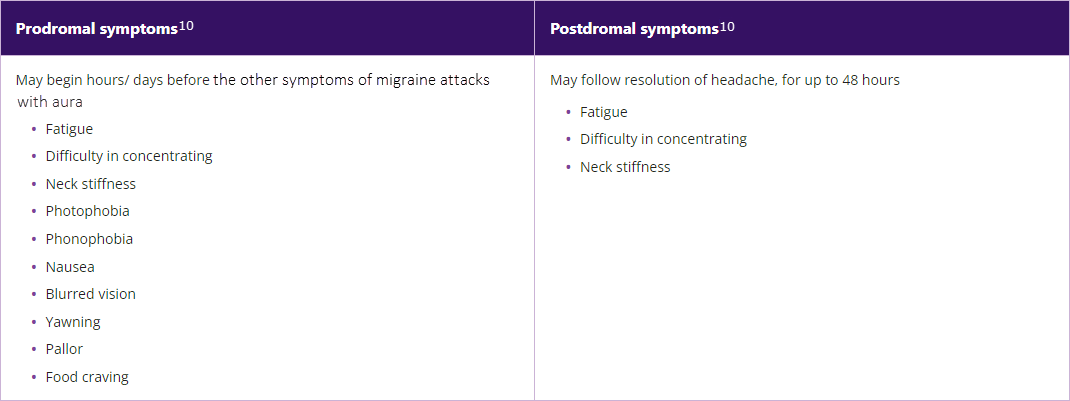Understanding and addressing unmet need in chronic migraine
- It is estimated that 190,000 migraine attacks are experienced every day in the UK6
- Migraine affects approximately 23.3% of adults in the UK, with a higher prevalence in females than in males7,8
- As many as 86 million workdays could be lost annually in the UK due to migraine-related absenteeism and presenteeism7
- Chronic migraine is a debilitating disease, affecting 1.4-2.2% of adults worldwide9
CHRONIC MIGRAINE IS A COMPLEX NEUROLOGICAL DISEASE REQUIRING APPROPRIATE EFFECTIVE MANAGEMENT – INCLUDING TREATMENT OR REFERRALS TO IMPROVE PATIENT OUTCOMES2,10,11
Chronic migraine is a complex and fluctuating disease that debilitates patients when it is not treated effectively12,13
Patients with chronic migraine exhibit large variations in the frequency of their migraines13
Associated with many comorbidities, including anxiety, depression and sleep disorders.12, 14
It can be challenging to correctly diagnose patients.16 Learn about differential diagnosis
Common symptoms of migraine
Migraine is a complex condition with a wide variety of symptoms.10 It can be classified as migraine without aura, characterised by headache with specific symptoms and features, or migraine with aura, characterised by transient focal neurological symptoms that typically precede and/or accompany the headache.10 Some patients also experience a prodromal and a postdromal phase.10
A small proportion (<10%) of women with migraine have attacks, typically without aura, associated with their menstrual cycle.10 Attacks occurring during menstruation are usually longer and accompanied by more severe nausea than those occurring at other times of the menstrual cycle.10
Chronic migraine is a complex neurological disease requiring appropriate effective management - including treatment or referrals to improve patient outcomes2,10,11
CM: chronic migraine.
Please refer to the BOTOX® Summary of Product Characteristics for further information on adverse events, contraindications and special warnings and precautions for use.
Adverse events should be reported. Reporting forms and information can be found at https://yellowcard.mhra.gov.uk/
Adverse events should also be reported to AbbVie on GBPV@abbvie.com
Date of preparation: March 2024. UK-BCM-240036















